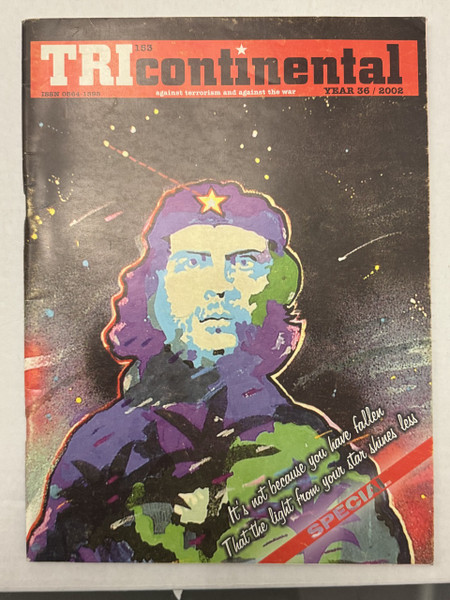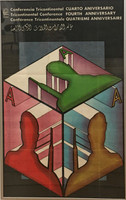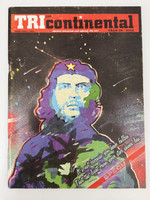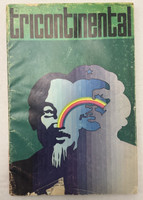- Travel
-
Exhibits
- Covers
- Immortal Cuba: Artists Take on Their Heroes
- Seattle Poster Exhibit
- Sandra Dooley & Alejandrina Cué
- The Art of Wayacón
- Cuban Folk Art
- Cuba In Black And White
- 25 Years of Cuban Art Space
- Summer Folk Art Expo
- ¡SPRING AWAKENING FROM CUBA!
- Celebrating The Art Of Cuban Women
- Celebrating Paper, Affordable Art from Cuba
- Art of the Revolution
- Outsider Art
- Lost and Found
- En la lucha: Celebrating Cuban Women and Their Art
- Cuban Art Stash
- 100 Fires: 5 Cienfuegos Artists' Work on Paper
- Waya + Monte! Magic Realism in Cienfuegos
- Viva Cuba Viva! Poster Show
- Cultivando Sueños
- Black Lives Matter in Cuba Jan 9-March 27
- Leandro Soto: Crónicas visuales
- Cuban Canvas
-
Archive
- Global Reflection 2018: Spirit and Community
- Exhibit in the cloud: Contemporary Works on Paper
- MADE IN CUBA! MINNEAPOLIS EXHIBIT
- Cuban Posters and Photography from CCS collection
- AUTUMN SALE! Sept/Oct 2017
- SPRING ARTS AND CRAFT SALE
- Vuelo Directo/Non Stop: Alberto & Alejandro Lescay
- The Many Faces of Fidel
- Somos
- Made in Cuba!
- The US empire in Cuban graphics
- Made in Cuba/Seattle exhibit
- Entre Nos
- Looking Back
- Cuban Art Space
- Membership/Donate
- About Us
- Cuba News
-
Tricontinental No. 165 marks the 35th anniversary of Che Guevara's death in Bolivia in 1967, published by OSPAAAL in 2002 with the tagline "against terrorism and against the war." This special commemorative issue demonstrates how Che's legacy remained central to OSPAAAL's mission of international solidarity even three and a half decades after his martyrdom, during a period when U.S. military interventions in Afghanistan and the emerging "War on Terror" gave renewed urgency to anti-imperialist analysis.
Cover illustrator Alfredo Rostgaard—renowned Cuban artist who worked with Tricontinental since its beginning and created numerous posters that are now part of the OSPAAAL collection—collaborates with cover designer Leonel Prado to create a striking psychedelic portrait of Che. The image is rendered in vibrant purples, blues, greens, and yellows with an orange-pink outline, set against a cosmic dark background scattered with colorful paint splatters suggesting stars. Che's iconic image from Alberto Korda's 1960 photograph is transformed into a celestial, almost spiritual vision, with a yellow star on his beret glowing like a beacon. The artistic treatment recalls both 1960s counterculture poster aesthetics and the continued internationalization of Che as a symbol transcending specific political contexts. White script across the image declares: "It is not because you have fallen / That the light from your star shines less" with "SPECIAL" marked in a red banner.
The opening editorial "The Endless Fight" features a powerful composition combining historical photographs of guerrilla fighters with a contemporary high-contrast portrait montage showing Che's face along with faces of other revolutionaries and common people. The text reflects on how "Nobody mocked death as much as that man who spent his last birthday 'in the cold watering place, awaiting news' and thinking that he had arrived to '39' and an age is inevitably approaching that demands some thought about my future as a guerrilla fighter."
The editorial continues: "Like his family of blood, many do not celebrate the mournful October days because they recognize him everywhere, each time livelier. They have seen him in the cities and in Genoa, in Quebec or in Porto Alegre, marching at the head of the anti-globalization protests alongside them. They know that he founds revolutionary schools in the jungle forests of Brazil, Argentina, Mexico; that he fights side by side with Fidel in the arduous battle of the Cubans to maintain and enrich their socialist practice."
The table of contents reveals diverse international coverage including Luis Suárez Salazar's "I was Che's Friend," Victor Dreke's "The Keystone of Victory," articles on Tatu, photos of revolutionaries, and pieces on guerrilla movements. Additional articles include "He Was Anxious to Reshape the World," "Accompanying the Heroes," and contributions from various revolutionary movements and intellectuals continuing to draw inspiration from Che's example in contemporary struggles against neoliberal globalization and U.S. imperialism.
This issue demonstrates OSPAAAL's evolution into the 21st century, maintaining its commitment to Tricontinental solidarity while addressing new forms of imperialism and resistance movements from the anti-globalization protests in Seattle, Genoa, and Quebec to ongoing liberation struggles across the Global South. Rostgaard's psychedelic vision of Che perfectly captures how the revolutionary icon's image continued to inspire new generations of activists worldwide.
-







